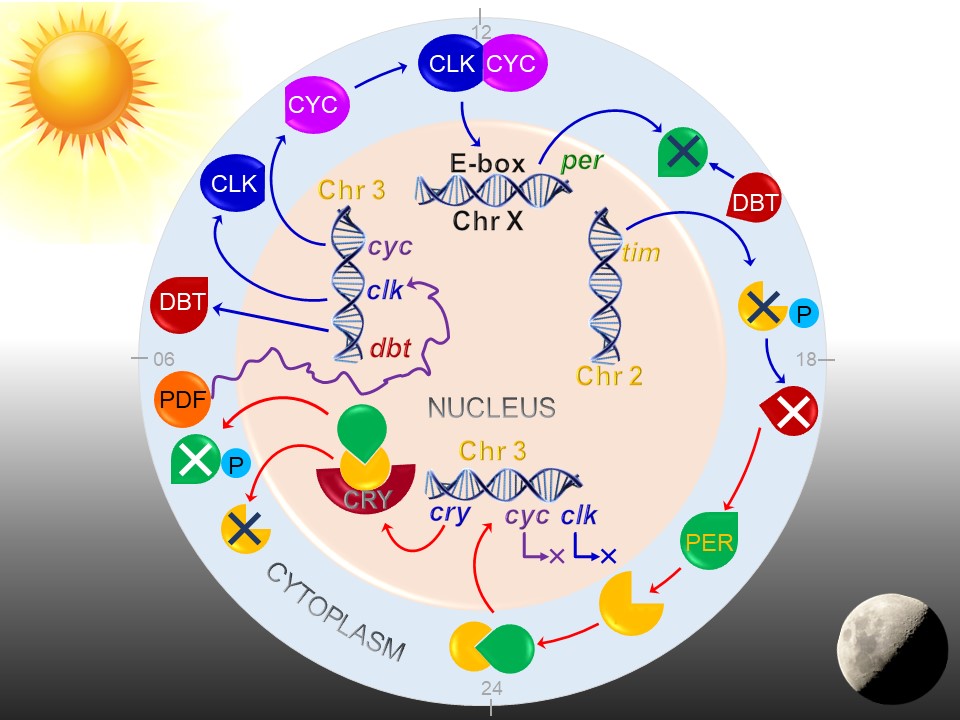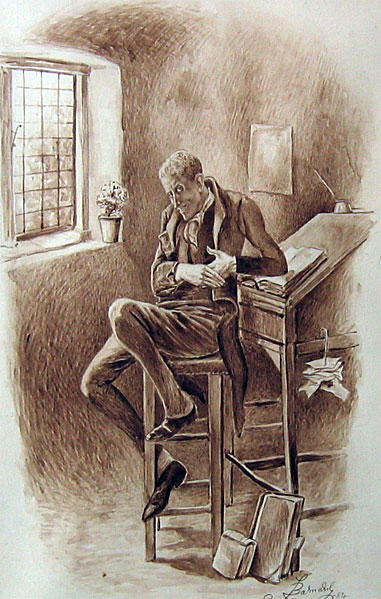|
Biorhythms
The biorhythm theory is the pseudoscientific idea that our daily lives are significantly affected by rhythmic cycles with periods of exactly 23, 28 and 33 days,. typically a 23-day physical cycle, a 28-day emotional cycle, and a 33-day intellectual cycle. The idea was developed by Wilhelm Fliess in the late 19th century, and was popularized in the United States in the late 1970s. The proposal has been independently tested and, consistently, no validity for it has been found. Basic rhythm details * Physical cycle ** 23 days; Circavigintan ** coordination ** strength ** well-being * Emotional cycle ** 28 days; Circatrigintan ** creativity ** sensitivity ** mood ** perception ** awareness * Intellectual cycle ** 33 days; Circatrigintan ** alertness ** analytical functioning ** logical analysis ** memory or recall ** communication According to the theory of biorhythms, a person's life is influenced by rhythmic biological cycles that affect his or her ability in various domains, su ... [...More Info...] [...Related Items...] OR: [Wikipedia] [Google] [Baidu] |
Wilhelm Fliess
Wilhelm Fliess (german: Wilhelm Fließ; 24 October 1858 – 13 October 1928) was a German otolaryngologist who practised in Berlin. He developed the pseudoscientific Biorhythm theory, theory of human biorhythms and a possible nasogenital connection that have not been accepted by modern scientists. He is today best remembered for his close friendship and theoretical collaboration with Sigmund Freud, a controversial chapter in the history of psychoanalysis. Career Fliess developed several idiosyncratic theories, such as "vital periodicity", forerunner of the popular concepts of Biorhythm theory, biorhythms. His work never found scientific favour, but some of his thinking, such as the idea of innate bisexuality, was incorporated into Freud's theories. Fliess believed men and women went through mathematically-fixed sexual cycles of 23 and 28 days, respectively. Another of Fliess's ideas was the theory of "nasal reflex neurosis". This became widely known following the publication o ... [...More Info...] [...Related Items...] OR: [Wikipedia] [Google] [Baidu] |
Biological Rhythm
Biological rhythms are repetitive biological processes. Some types of biological rhythms have been described as biological clocks. They can range in frequency from microseconds to less than one repetitive event per decade. Biological rhythms are studied by chronobiology. In the biochemical context biological rhythms are called biochemical oscillations. The variations of the timing and duration of biological activity in living organisms occur for many essential biological processes. These occur (a) in animals (eating, sleeping, mating, hibernating, migration, cellular regeneration, etc.), (b) in plants (leaf movements, photosynthetic reactions, etc.), and in microbial organisms such as fungi and protozoa. They have even been found in bacteria, especially among the cyanobacteria (aka blue-green algae, see bacterial circadian rhythms). Circadian rhythm The best studied rhythm in chronobiology is the circadian rhythm, a roughly 24-hour cycle shown by physiological processes in all thes ... [...More Info...] [...Related Items...] OR: [Wikipedia] [Google] [Baidu] |
Casio
is a Japanese multinational electronics manufacturing corporation headquartered in Shibuya, Tokyo, Japan. Its products include calculators, mobile phones, digital cameras, electronic musical instruments, and analogue and digital watches. It was founded in 1946, and in 1957 introduced the world's first entirely compact electronic calculator. It was an early digital camera innovator, and during the 1980s and 1990s, the company developed numerous affordable home electronic keyboards for musicians along with introducing the world's first mass-produced digital watches. History Casio was established as Kashio Seisakujo in April 1946 by Tadao Kashio ( 樫尾忠雄 1917–1993), an engineer specializing in fabrication technology. Kashio's first major product was the yubiwa pipe, a finger ring that would hold a cigarette, allowing the wearer to smoke the cigarette down to its nub while also leaving the wearer's hands free. Japan was impoverished immediately following World War II, so ... [...More Info...] [...Related Items...] OR: [Wikipedia] [Google] [Baidu] |
Circadian Rhythm
A circadian rhythm (), or circadian cycle, is a natural, internal process that regulates the sleep–wake cycle and repeats roughly every 24 hours. It can refer to any process that originates within an organism (i.e., Endogeny (biology), endogenous) and responds to the environment (Entrainment (chronobiology), entrained by the environment). These 24-hour rhythms are driven by a circadian clock, and they have been widely observed in animals, plants, fungi and cyanobacteria. The term ''circadian'' comes from the Latin ''wikt:circa#Latin, circa'', meaning "approximately", and ''dies'', meaning "day". Processes with 24-hour cycles are more generally called diurnal rhythms; diurnal rhythms should not be called circadian rhythms unless they can be confirmed as endogenous, and not environmental. Although circadian rhythms are endogenous, they are adjusted to the local environment by external cues called zeitgebers (German for "time givers"), which include light, temperature and redox cy ... [...More Info...] [...Related Items...] OR: [Wikipedia] [Google] [Baidu] |
Chronotherapy (treatment Scheduling)
Chronotherapy, also called chronotherapeutics or chronotherapeutic drug delivery, refers to the coordination of therapeutic treatments with an individual's circadian or other rhythmic cycles. This may be done to maximize effectiveness of a specific treatment, minimize possible side effects, or both. In the treatment of psychiatric conditions including bipolar depression, a form of chronotherapy combining intermittent sleep deprivation and morning bright light has shown efficacy and relative tolerability in a number of controlled studies. See also * Personalized medicine Personalized medicine, also referred to as precision medicine, is a medical model that separates people into different groups—with medical decisions, practices, interventions and/or products being tailored to the individual patient based on the ... References {{reflist, 30em Circadian rhythm Therapy ... [...More Info...] [...Related Items...] OR: [Wikipedia] [Google] [Baidu] |
Chaos Theory
Chaos theory is an interdisciplinary area of scientific study and branch of mathematics focused on underlying patterns and deterministic laws of dynamical systems that are highly sensitive to initial conditions, and were once thought to have completely random states of disorder and irregularities. Chaos theory states that within the apparent randomness of chaotic complex systems, there are underlying patterns, interconnection, constant feedback loops, repetition, self-similarity, fractals, and self-organization. The butterfly effect, an underlying principle of chaos, describes how a small change in one state of a deterministic nonlinear system can result in large differences in a later state (meaning that there is sensitive dependence on initial conditions). A metaphor for this behavior is that a butterfly flapping its wings in Brazil can cause a tornado in Texas. Small differences in initial conditions, such as those due to errors in measurements or due to rounding errors i ... [...More Info...] [...Related Items...] OR: [Wikipedia] [Google] [Baidu] |
Circadian Rhythm
A circadian rhythm (), or circadian cycle, is a natural, internal process that regulates the sleep–wake cycle and repeats roughly every 24 hours. It can refer to any process that originates within an organism (i.e., Endogeny (biology), endogenous) and responds to the environment (Entrainment (chronobiology), entrained by the environment). These 24-hour rhythms are driven by a circadian clock, and they have been widely observed in animals, plants, fungi and cyanobacteria. The term ''circadian'' comes from the Latin ''wikt:circa#Latin, circa'', meaning "approximately", and ''dies'', meaning "day". Processes with 24-hour cycles are more generally called diurnal rhythms; diurnal rhythms should not be called circadian rhythms unless they can be confirmed as endogenous, and not environmental. Although circadian rhythms are endogenous, they are adjusted to the local environment by external cues called zeitgebers (German for "time givers"), which include light, temperature and redox cy ... [...More Info...] [...Related Items...] OR: [Wikipedia] [Google] [Baidu] |
Suggestibility
Suggestibility is the quality of being inclined to accept and act on the suggestions of others. One may fill in gaps in certain memories with false information given by another when recalling a scenario or moment. Suggestibility uses cues to distort recollection: when the subject has been persistently told something about a past event, his or her memory of the event conforms to the repeated message. A person experiencing intense emotions tends to be more receptive to ideas and therefore more suggestible. Generally, suggestibility decreases as age increases. However, psychologists have found that individual levels of self-esteem and assertiveness can make some people more suggestible than others; this finding led to the concept of a spectrum of suggestibility. Definition Attempts to isolate a global trait of "suggestibility" have not been successful, due to an inability of the available testing procedures to distinguish measurable differences between the following distinct types of ... [...More Info...] [...Related Items...] OR: [Wikipedia] [Google] [Baidu] |
Post Hoc Analysis
In a scientific study, post hoc analysis (from Latin '' post hoc'', "after this") consists of statistical analyses that were specified after the data were seen. They are usually used to uncover specific differences between three or more group means when an analysis of variance (ANOVA) test is significant. This typically creates a multiple testing problem because each potential analysis is effectively a statistical test. Multiple testing procedures are sometimes used to compensate, but that is often difficult or impossible to do precisely. Post hoc analysis that is conducted and interpreted without adequate consideration of this problem is sometimes called ''data dredging Data dredging (also known as data snooping or ''p''-hacking) is the misuse of data analysis to find patterns in data that can be presented as statistically significant, thus dramatically increasing and understating the risk of false positives. T ...'' by critics because the statistical associations that it fin ... [...More Info...] [...Related Items...] OR: [Wikipedia] [Google] [Baidu] |
Confirmation Bias
Confirmation bias is the tendency to search for, interpret, favor, and recall information in a way that confirms or supports one's prior beliefs or values. People display this bias when they select information that supports their views, ignoring contrary information, or when they interpret ambiguous evidence as supporting their existing attitudes. The effect is strongest for desired outcomes, for emotionally charged issues, and for deeply entrenched beliefs. Confirmation bias cannot be eliminated, but it can be managed, for example, by education and training in critical thinking skills. Biased search for information, biased interpretation of this information, and biased memory recall, have been invoked to explain four specific effects: # ''attitude polarization'' (when a disagreement becomes more extreme even though the different parties are exposed to the same evidence) # ''belief perseverance'' (when beliefs persist after the evidence for them is shown to be false) # the ''irr ... [...More Info...] [...Related Items...] OR: [Wikipedia] [Google] [Baidu] |
Motivated Reasoning
Motivated reasoning is the phenomenon in cognitive science and social psychology in which emotional biases lead to justifications or decisions based on their desirability rather than an accurate reflection of the evidence. It is the "tendency to find arguments in favor of conclusions we want to believe to be stronger than arguments for conclusions we do not want to believe". People can therefore draw self-serving conclusions not just because they want to but because the conclusions seemed more plausible given their beliefs and expectancies. Motivated reasoning is similar to confirmation bias, where evidence that confirms a belief (which might be a logical belief, rather than an emotional one) is either sought after more or given more credibility than evidence that disconfirms a belief. It stands in contrast to critical thinking where beliefs are approached in a skeptical and unbiased fashion. It can lead to forming and clinging to false beliefs despite substantial evidence to ... [...More Info...] [...Related Items...] OR: [Wikipedia] [Google] [Baidu] |



